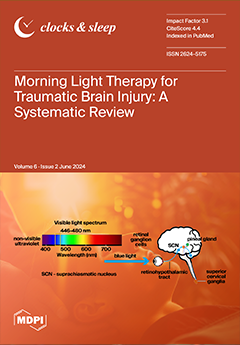While light at night (LAN) and noise levels have been linked to suboptimal sleep outcomes, little is known about the link between these factors and long-term suboptimal sleep trajectories. The current study examined the association of neighborhood LAN and nighttime noise with long-term
[...] Read more.
While light at night (LAN) and noise levels have been linked to suboptimal sleep outcomes, little is known about the link between these factors and long-term suboptimal sleep trajectories. The current study examined the association of neighborhood LAN and nighttime noise with long-term sleep trajectories in a cohort of Black individuals and White individuals predominantly from low-income communities. We used data from the Southern Community Cohort Study (N = 28,759 Black individuals and 16,276 White individuals). Sleep duration was self-reported at baseline and after an average of five years of follow-up, based on which we constructed nine sleep trajectories: normal–normal (optimal, reference), short–short, long–long, short–long, long–short, normal–short, normal–long, short–normal, and long–normal. LAN and nighttime noise were derived from satellite imagery and model-based estimates, respectively. Multinomial logistic regression was used to determine the relationship between LAN and noise exposures and sleep trajectories. Higher exposures to LAN and nighttime noise were associated with multiple suboptimal long-term sleep trajectories. In the total sample, higher LAN was associated with higher odds of long–long (OR
Q5 vs. Q1 = 1.23 (CI = 1.02, 1.48)) and long–short (OR = 1.35 (CI = 1.06, 1.72)) trajectories, while higher nighttime noise was associated with short–short (1.19 (1.07, 1.31)), long–short (1.31 (1.05, 1.64)), and normal–song (1.16 (1.01, 1.34)) trajectories. Black and White individual-specific results showed qualitatively similar patterns between Black individuals and White individuals, although we also observed suggestive evidence for Black–White individual differences. In conclusion, elevated LAN and nighttime noise levels were associated with various suboptimal long-term sleep trajectories. However, it is noteworthy that the light and noise measures in our study may not accurately reflect individual-level exposures, and residual confounding from other factors is a concern. Future studies should use more accurate exposure measurements, collect information on and control for a wider range of factors, and examine whether reductions in neighborhood light and noise levels may contribute to improved long-term sleep health.
Full article






